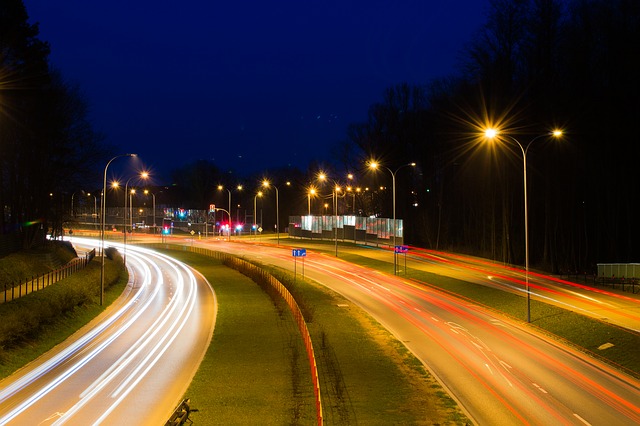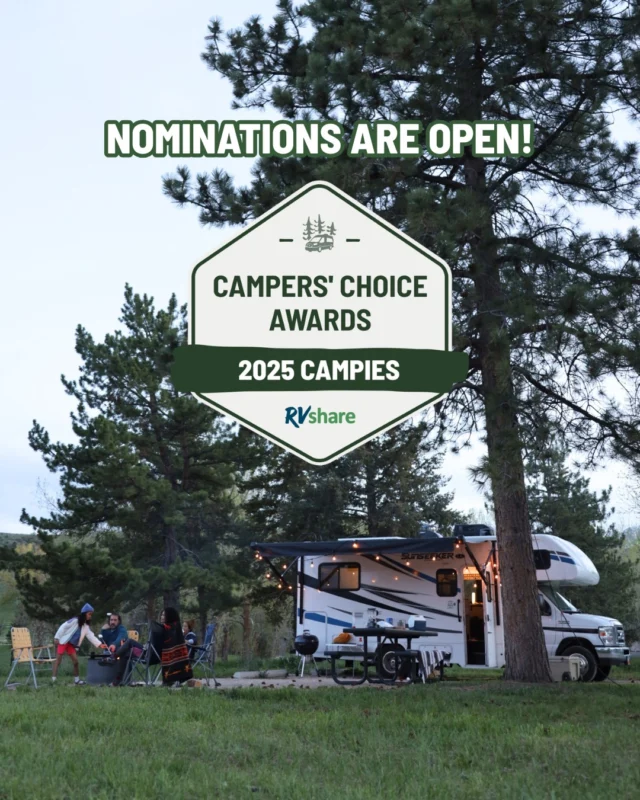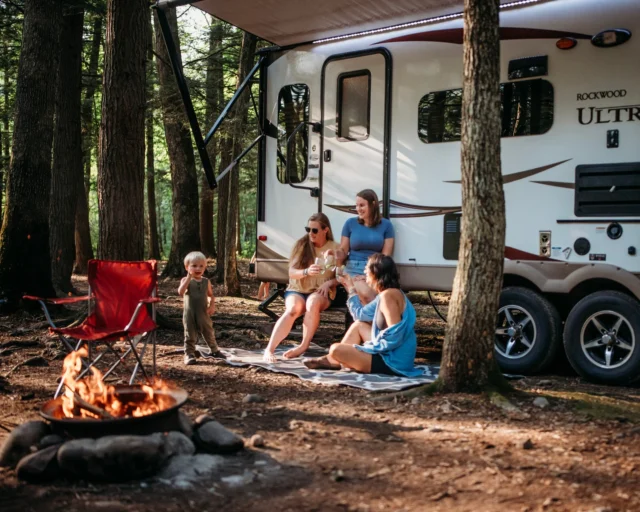
There may be times when you travel by motorhome that you find yourself needing to drive at night. Perhaps you just have a small way to finish going before you get to your destination, or you’re driving during the shorter winter months.
You may even choose to travel at night on purpose. You’ll encounter less traffic. Heavy winds tend to subside after dark. If you’re traveling with children, they often wind down after dark and may even fall asleep while you drive. It can be an exciting feeling driving past sleepy towns and knowing you’re one of a few people still out on the road while the world around you snoozes.
Driving an RV Safely at Night
Regardless of the reasons why you find yourself driving your motorhome at night, you could be nervous at the idea if you’re not used to it. We have some tips to keep you and your precious cargo safe while you’re driving during the dark.

RV nighttime driving tips
Many of these tips apply regardless of whether you’re driving a small car or a large RV and this is a helpful list for everyone who finds themselves driving at night! Some of these tips involve preparations you need to make before you leave on your drive, and some are things you need to do while you’re actually on the road.
Before you go:
1.) Get plenty of sleep
You don’t want to get drowsy on the road. Make sure you’re well-rested before you leave on your drive. Be willing to stop and make accommodations – perhaps at a rest stop or truck stop – to sleep if you need to along the way. While you’re on the road, have your seat upright rather than leaned back and relaxed. Keep the temperature a little cooler than usual. If you can, enlist a partner to sit up front and talk with you to keep you engaged and awake. Plan to stop and stretch your legs and get a snack that will give you energy. Stay hydrated.
2.) Clean your windshield, mirrors, and headlights
Dirt on windshields and mirrors is more noticeable in the dark and can impair your ability to see. Make sure all windows and mirrors you need to see out of are clean, and clean your headlights.
3.) Check your wipers
Windshield wipers that don’t wipe properly also make it hard to see in the dark. Make sure yours clear your windshield smoothly and don’t leave any streaks.
4.) Check your headlights
Along with making sure your headlights are clean, make sure they’re adjusted to shine where you need them. You may also find that RVs and trailers that are loaded and heavy will cause the headlights to shine at a different angle that an unloaded motorhome, so test your headlights while your rig is fully loaded before you start.
5.) Do a basic maintenance check
Breaking down on the road is a pain at any hour, but can be especially hard at night. Check your tires, oil, and other basic equipment to make sure it’s in good working order before you leave. You can’t prevent every mishap but you can cut down on the odds if you make sure your RV is in good working order before you go. Have the number of a 24/7 roadside service available – if you’re renting with RVshare, they have someone on-call around the clock to help you if you have trouble.

On the road:
While you’re on the road, practice these safety tips to help you drive at night.
6.) Go slow
Since you can’t see as far in the distance at night, you have less time to stop when you see an obstruction. Plan to drive slower – a vehicle driving 65 mph needs 50 more feet to stop than one traveling at 60 mph. When you’re planning how far you will drive, add in extra time so you don’t feel pressured to drive at your normal speed to get there.
7.) Use the high beams and fog lights
Drive with high beams on when you’re the only vehicle on the road (don’t use them when there is oncoming traffic because you’ll blind other drivers). Your fog lights illuminate a low, wide area so use them even if it’s not foggy.
8.) Cut down on inside lights
Inside lights can impair your ability to see the road and vehicles outside your RV. Cut down on cabin lights and other devices that may be a distraction inside. Dim your instrument panel – if it’s too bright, your eyes will have to adjust as they switch from the panel to the road outside. Make sure your GPS screen is on night mode as well.
9.) Watch for animals
Watch for deer and other animals in the road at night. If you see them, don’t swerve – you could lose control of your vehicle, run off the road, or hit another car or guardrail. Brake to a controlled stop. Here are more tips to avoid hitting a deer at night. The best plan is to go slow and keep your eyes peeled in areas where you may encounter wildlife.

When you arrive:
Make sure you have a plan in place for how you’ll set up at your destination. If you’re headed to someone’s house, make sure they know what you’ll need to set up the RV (and make sure they’ll be awake when you get there!). Be mindful of neighbors and keep your voice low.
If you’re traveling with kids, have all their evening things together in one bag so they can easily brush teeth and get ready for bed. You may even want to have them get pajamas on and brush their teeth before you leave. Nothing is more frustrating than arriving at your destination, tired and wanting to sleep, and having to rummage through stuff to find what you need!
If you’re headed to a campground:
10.) Have an extra set of eyes
GPS devices are handy but they’re not always accurate. If you’re headed to an out-of-the-way campground or wilderness area it can be helpful to have a partner who can spot signs and help you find your way to the campsite.
11.) Make sure the campground will be open
Some campgrounds or parks close their gates at a certain time, or don’t take arrivals after a certain hour. Check ahead of time to be sure you can get to your site, and know the campground number in case you end up arriving late.

12.) Book a pull-thru
If you’re arriving late, a pull-thru site is going to be much easier to set up than a site that requires you to back in. If you do have a back-in site, get out of your RV and manually inspect the spot before you drive in. Check for branches and for obstacles you might hit in front before you begin to drive. Keep in mind that the area will not be well-lit and try to make sure the space is as clear as possible.
13.) Have lights handy
Keep several flashlights and extra batteries where you can get to them easily to help you while you set up. You may need to use them to find your site number, and you’ll want your travel partner to flash them on any obstacles while you’re trying to park.
14.) Be mindful of the neighbors
If you arrive late at night, keep your voice and activities to a minimum. If you can avoid hooking up sewer or water, wait until morning to do that. Be careful of making too much noise or shining too many lights late at night.
Drive safely, everyone!






